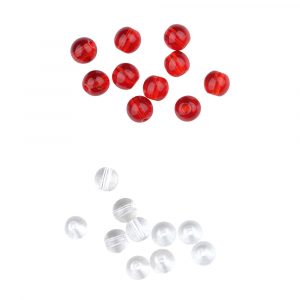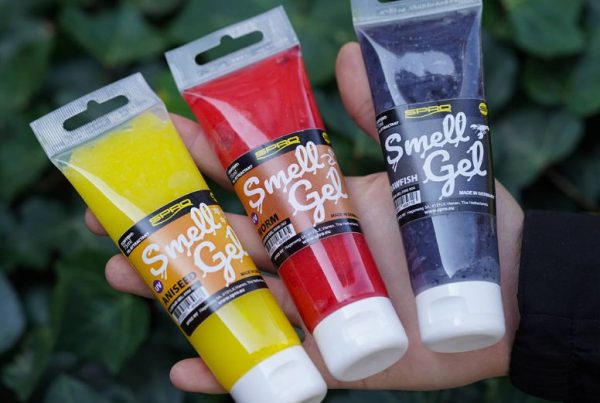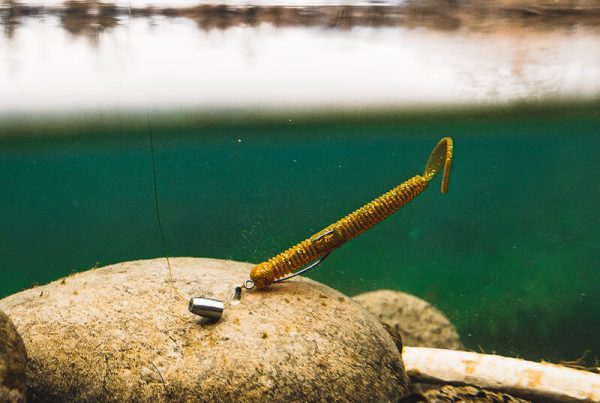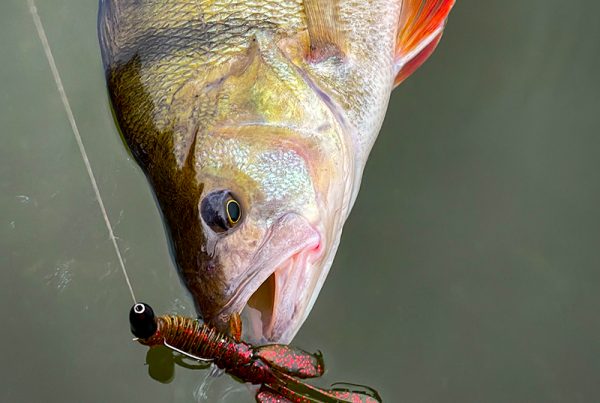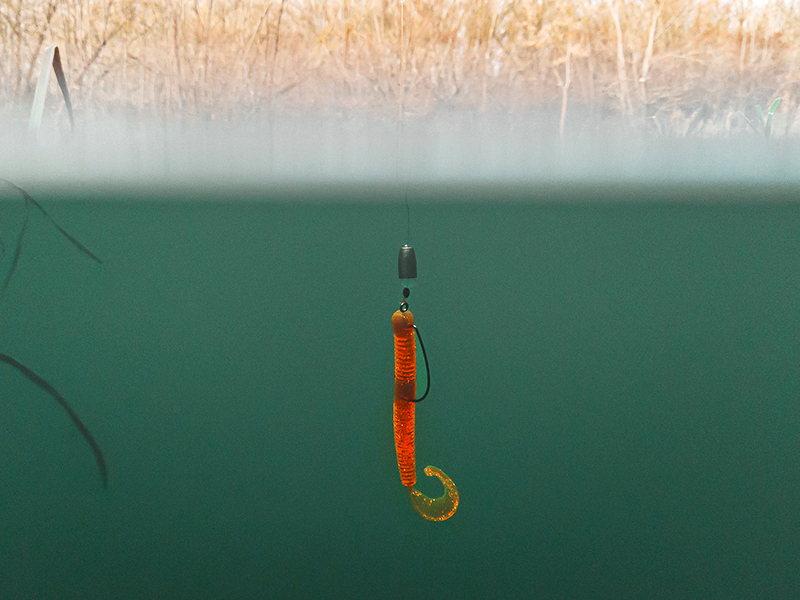
Both the Carolina rig and the Texas rig are finesse rigs that can also be used and fished very well by beginners. Even die-hard spin fishermen like to use this method because they know exactly how to catch them. Find out here what advantages this method offers us and what you should look out for!
Texas Rig
The assembly of the T-rig is very simple. First, a bullet/cartridge weight is threaded onto the fluorocarbon leader, followed by a glass bead. The bead has two functions. Firstly, it creates an unmistakable clicking sound under water every time the rod is plucked, which is generated by the bullet (cartridge) or tungsten weight when it hits the glass bead and increases attention under water. On the other hand, the bead prevents the weight used from repeatedly hitting the knot and damaging the knot and the fluorocarbon leader.
The grand finale is the hook, which is simply connected to the fluorocarbon leader with a clinch knot. Offset hooks are mainly used as hooks. On the one hand, because the lure has a keel under its belly and runs stable and straight under water. And secondly, because the hook is close to the rubber body, which significantly reduces the hooking rate. This means that the rubber fish, crayfish or crature baits can also be fished hard against obstacles or underwater plants, where the fish like to be.
Carolina Rig
The Carolina rig uses almost the same materials as the Texas rig. The only difference is that the C-rig has a fixed distance between the bait and the lead. There are now several ways in which it can be tied. We will go into two variants in more detail below.
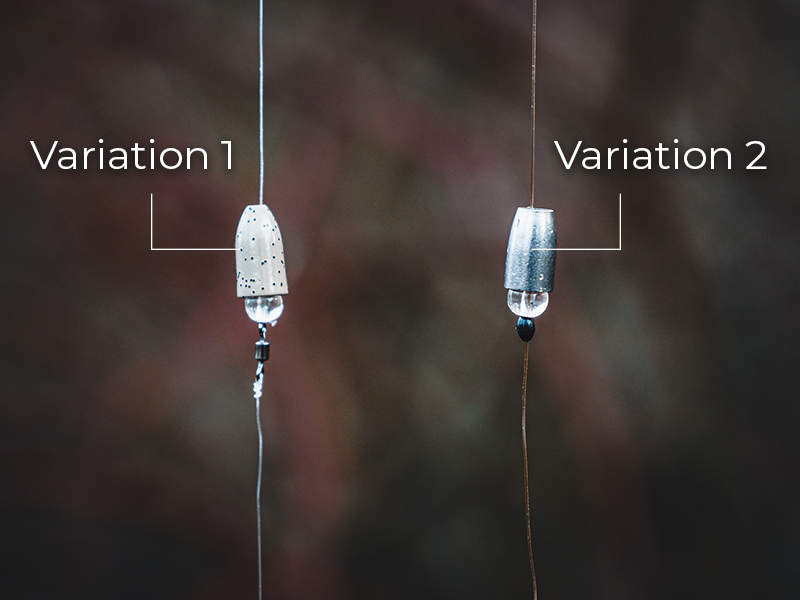
Variant 1
The first step is to thread the bullet weight onto the fluorocarbon leader and then the bead as with the Texas rig. Next, use a small swivel that is tied to the leader with a clinch knot after threading on the glass bead. Now determine the desired distance that your bait should be from the lead and cut off the correspondingly long piece of fluorocarbon. Normally, the leader is shortened to a length of 15-40 cm. For perch, the fluorocarbon should be 0.20-0.30 mm thick, or 0.40 mm if you are fishing for zander. Here, too, the offset hook is attached at the end. This type of rig is particularly suitable for heavy weights and long casts.
Variant 2
dispenses with the small swivel that determines the distance between the bait and the lead. Instead of the swivel, one or two high-quality stopper beads are pulled onto the leader after threading on the lead and the bead. Advantage compared to mounting with the swivel: The leader length between bait and lead can be changed as often as required, depending on how jagged or still the bait is to be guided.
Another advantage of this type of mounting is that the stoppers can be pushed completely towards the hook in a flash, creating a Texas rig.
A little tip: always rub the line dry before threading or moving the stopper beads. The moisture on the line acts as a lubricant when it is threaded onto the nose of the line, which means that the lead pushes the rubber stoppers towards the hook more quickly.
Simple bait change
There are two options for attaching the hook. While some prefer to tie their hook directly from Flurorocarbon, others also use a small snap here. This has the advantage that the bait can be changed quickly and does not break due to frequent bait changes on the already attached hook.
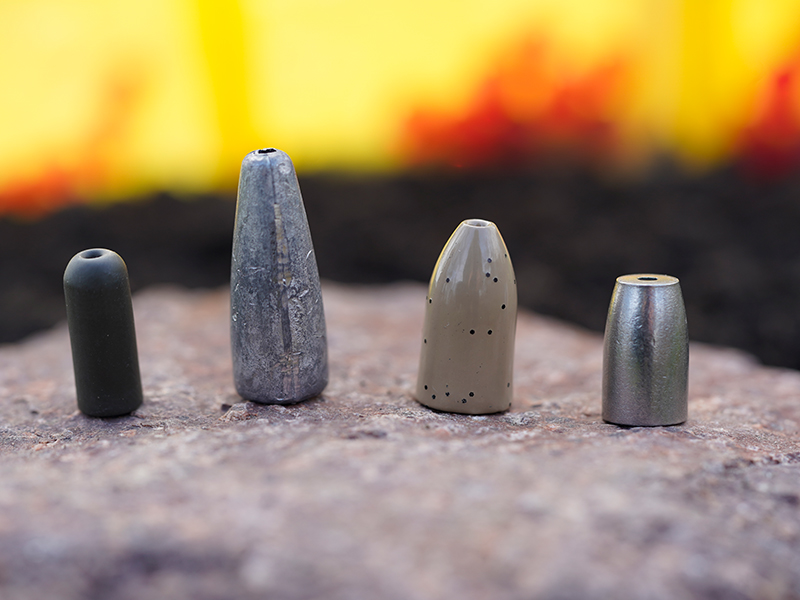
Does it have to be lead?
No, definitely not. Nowadays, the market also offers more environmentally friendly materials that have advantages. Since this year, SPRO has also been offering tungsten (tungsten) and stainless steel bullets.
In the next blog, we will go into the possible uses, bait presentation and the right choice of bait.
Until then, stay healthy and good luck on the water.
Your SPRO team
Most important products of the blog
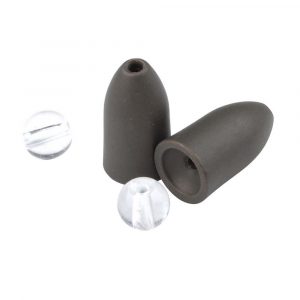
Tungsten Bullet Sinkers
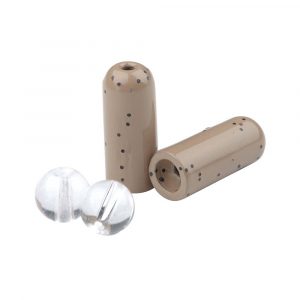
Tungsten Slim Bullet Sinkers
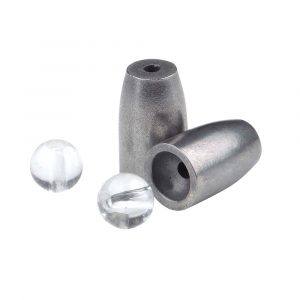
Stainless Steel Bullet Sinkers
